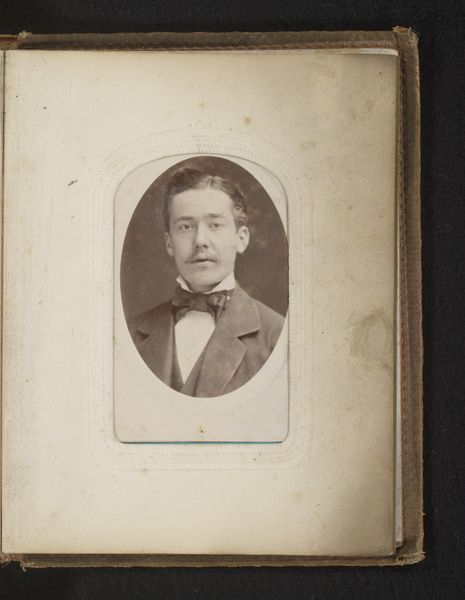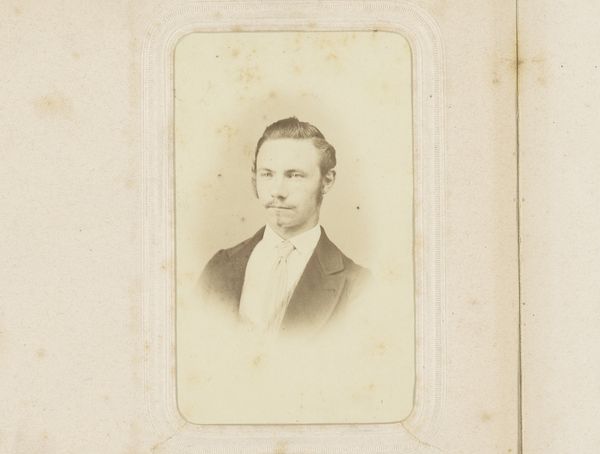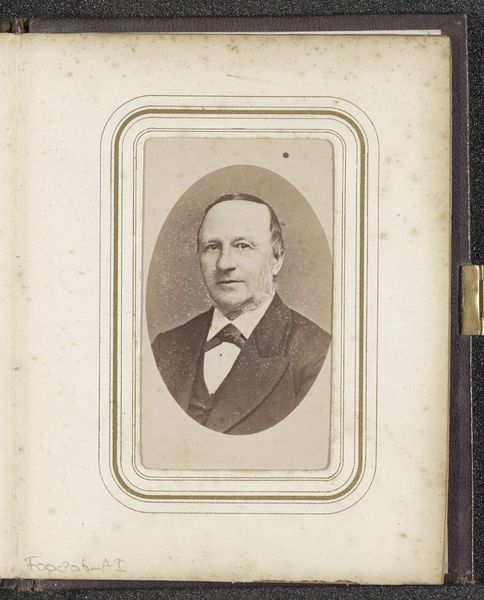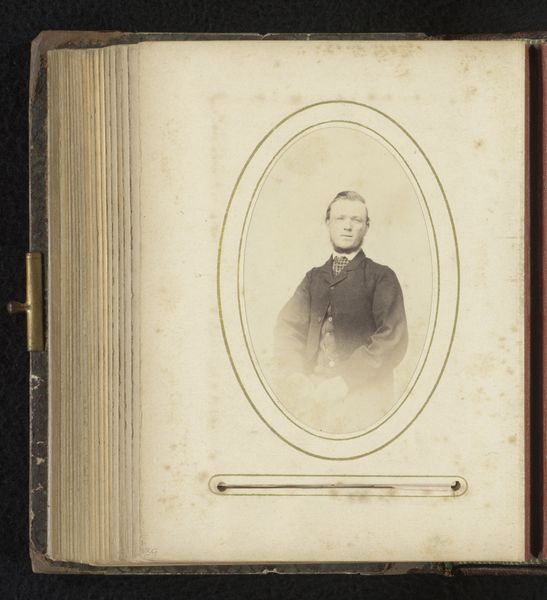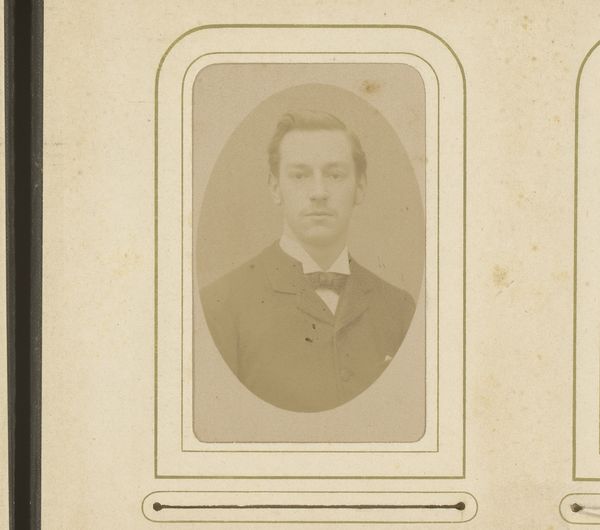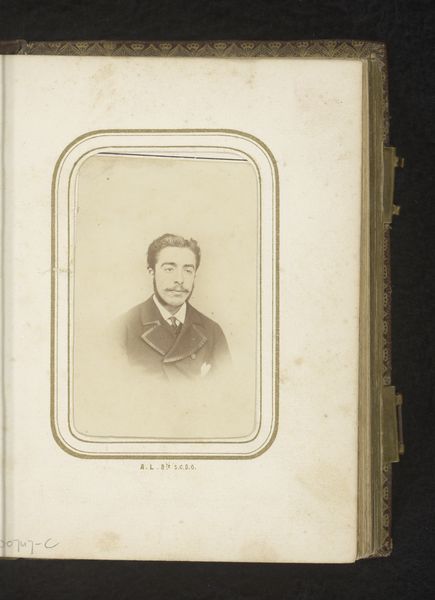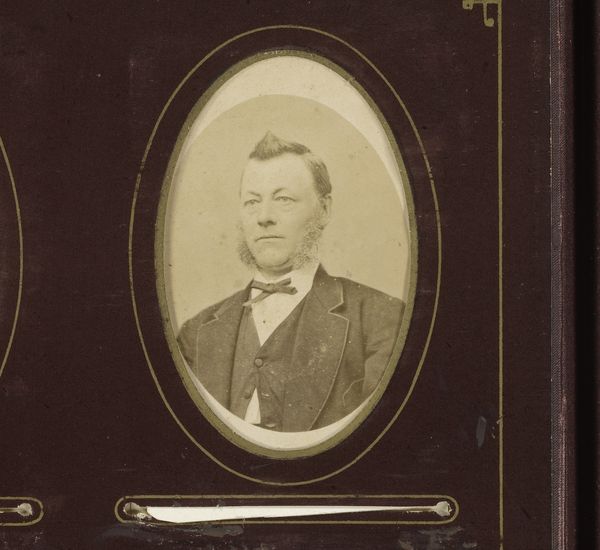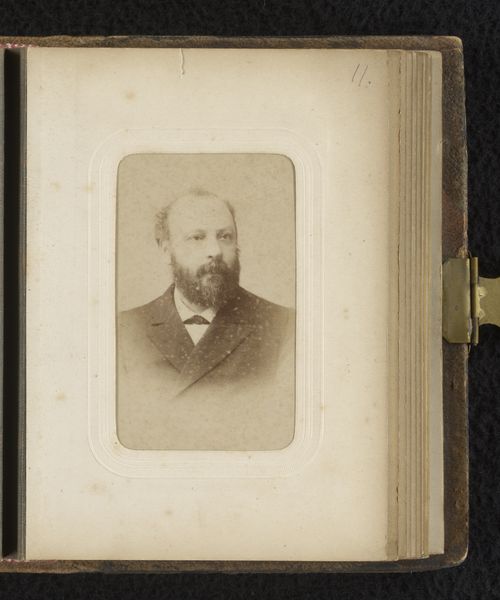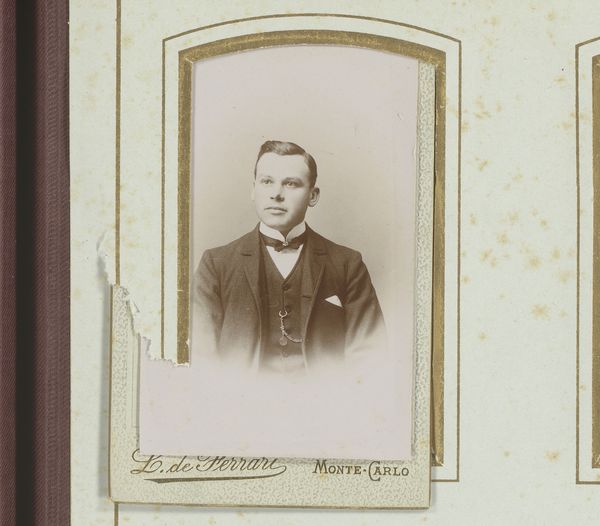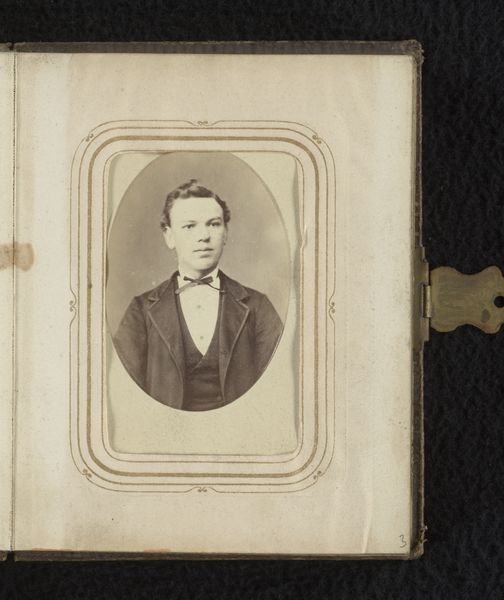
photography, gelatin-silver-print, albumen-print
#
portrait
#
photography
#
coloured pencil
#
gelatin-silver-print
#
albumen-print
Dimensions: height 83 mm, width 52 mm
Copyright: Rijks Museum: Open Domain
Curator: Welcome. Here we have an intriguing photographic print, "Portret van een man," attributed to Alexandre & Cie., and dating from the period of 1860 to 1900. It seems to be an albumen print mounted in an album. Editor: Immediately, there’s something ghostly and detached about it. The soft sepia tones, the rigid pose… it gives me a profound sense of solitude, almost like a memory fading away. Curator: Precisely. The tonality is quite key. Consider the composition: the oval frame isolates the subject. This, coupled with the limited tonal range, reinforces a sense of removal and, arguably, elevates the portrait beyond a mere representation of an individual. Editor: I’m curious about his stare. It's very direct but without intimacy. It's a performance, a manufactured image. It almost reads like he's asking, "Am I doing this right?" to the photographer just off camera. And then, I wonder what happened to him... who kept his photograph all these years, and then didn't? It’s heartbreaking. Curator: Indeed, photography during this period was still in its relative infancy. The very act of sitting for a portrait was often a formal, deliberate undertaking. We can analyze the attire - a formal suit and bow tie, hinting at a certain social standing or occasion. These codes work as signifiers of the sitter’s self-presentation within the accepted conventions of his time. Editor: But beneath that polished surface, there’s such raw humanity! That anxious glance, the faint shadows hinting at imperfections around his eyes. Despite the period, you can't hide that flicker of nerves. And I feel like I recognise him - isn't that odd? That photo might be of your grandfather! Or is that just the effect of the oval portrait and sepia toning? Curator: While an unproven genealogy is fascinating to speculate, let us not abandon objective consideration of form. It remains vital in order to comprehend an image of this era in its purest state. Editor: Of course. Yet, the interplay between this rigid formalism and our inherently emotional interpretation is what makes the image so potent, I feel. So, form and feeling co-exist. Curator: An observation, while perhaps unstructured, has the virtue of pointing to some value! Editor: So we agree after all, or, that is, at least there are two sides to every story… or every photograph? Curator: Yes, I concede a human presence resonates…a concept itself revealed and reinforced through analysis of period, composition, and form.
Comments
No comments
Be the first to comment and join the conversation on the ultimate creative platform.
